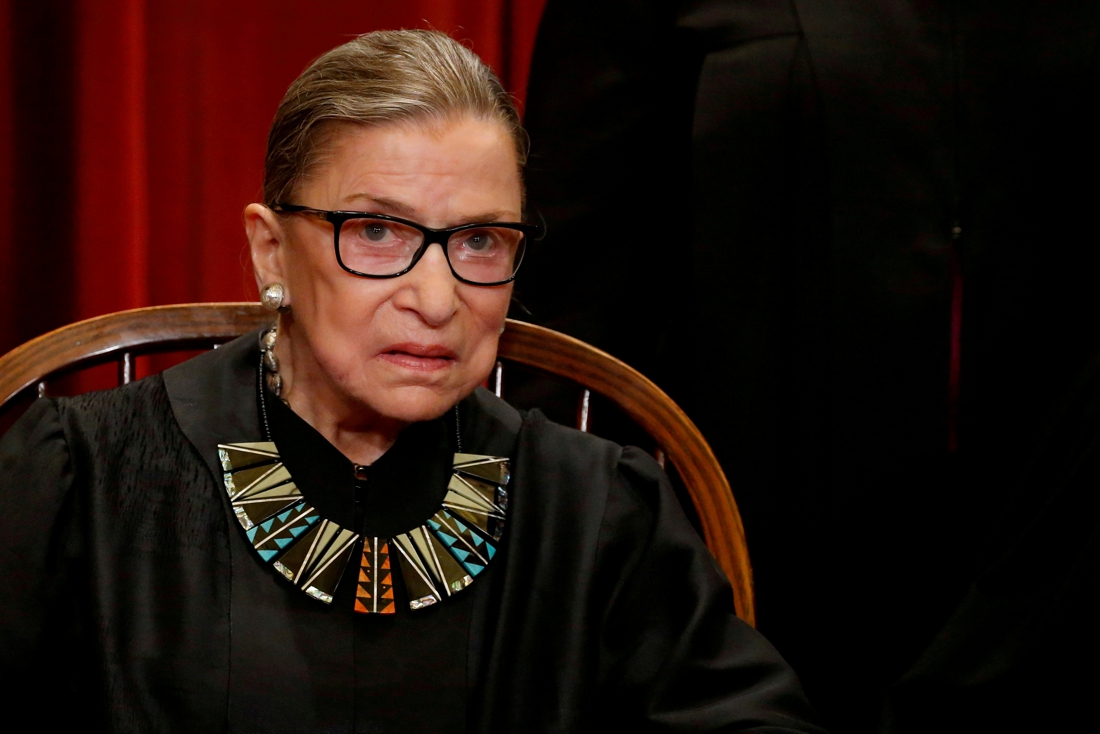Ruth Bader Ginsburg, a progressive US Supreme Court judge, died Friday at the age of 87 from pancreatic cancer. Much is at stake in the discussion about her succession: the Republicans can secure a majority in the Supreme Court for decades by quickly appointing a successor.
–
Ginsburg was highly regarded in the US. She was nominated by then President Clinton in 1993, only as the second female justice. She replaced progressive judge Byron White and was chosen by Clinton because he said she had the intellect and political skills to face the conservative judges.
As a judge, Ginsburg took a cautious, moderate and restrained attitude. She was placed within the moderate liberal bloc, and strongly committed to gender equality, workers’ rights and the separation of church and state.
Disease
In July of this year, Ginsburg reported that she was undergoing chemotherapy again for a cancer relapse, but that she had no plans to retire. ‘I have often said that I will remain a member of the court as long as I can do the job with full force. I remain fully capable of doing that, ”was a statement at the time from the oldest member of America’s highest judicial body. On Friday she succumbed to the disease.
Fight Trump
Ginsburg presented himself in 2016 as a staunch opponent of then-presidential candidate Donald Trump. She even called him a “faker” before apologizing for public statements about the election campaign.
In addition, Ginsburg, knowingly or not, has profiled herself as the strong woman who had to do everything she could to survive the Trump presidency. When Trump released a list of possible justices to replace older judges in January 2018, the then 84-year-old Ginsburg hinted that she was far from planning to leave by hiring a slew of servants with contracts until 2020.
‘Titan of the law’
Trump himself has already briefly commented on her death. “Our nation mourns the loss of a titan of the law today,” said the Twitter response. “Renowned for her brilliant mind and her strong dissent within the Supreme Court, Chief Justice Ginsburg showed that one cannot agree without being disagreeable towards colleagues or other points of view,” it sounds remarkably mild. “Her views, including some well-known decisions on equality for women and disabled people, have inspired all Americans, and generations of great legal minds.”
Succession
It has already been established that the succession of Ginsburg will be the subject of discussion. Since an appointment is for life, an appointment often has consequences for decades. Currently, there is a delicate balance between progressive and conservative judges in court. There are 9 members of the Supreme Court. Currently, there are 4 progressive, and 5 conservative, two of which have been designated by Trump. If Trump can appoint a third judge during his term, the balance will clearly lean towards conservative members.
Republican Senate President Mitch McConnell has already announced that he would like to vote quickly on a successor, if the president pushes it forward. McConnell justified that intention by stating that there is a Republican majority in the Senate and a Republican president.
That is a change of course, because the same McConnell stated in the last year of Obama’s second term that “in an election year the people must have a say on this matter.” Four years ago, Republicans refused hearings and votes to appoint Merrick Garland as the successor to Conservative Judge Antonin Scalia.
However, Democratic presidential candidate Joe Biden believes it is up to the winner of the US presidential election in November to decide who will replace late Chief Justice Ruth Bader Ginsburg. “It is up to the voters to elect a president and the president to propose a judge to the Senate,” Biden told the press.
– .


